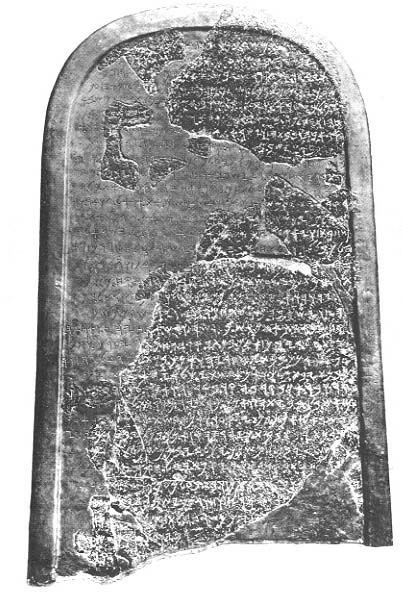Image Details

Les Monuments
When it was discovered in 1868 in Dhiban, Jordan, about three miles north of the Arnon River, the black basalt stone was intact. Its size, more than three feet high and two feet wide, made it the largest monumental inscription ever found in Palestine.
Following its discovery, the stone was broken into many pieces. After a long hunt, Charles Clermont-Ganneau, a French diplomat and amateur archaeologist, tracked down some fragments of the stone. Using the fragments and some partial copies of the text that had been made before its destruction, Clermont-Ganneau pieced together nearly the complete inscription. In the photo, the smooth areas of the stele mark places where the original stone was lost and where the text was reconstructed by Clermont-Ganneau.
